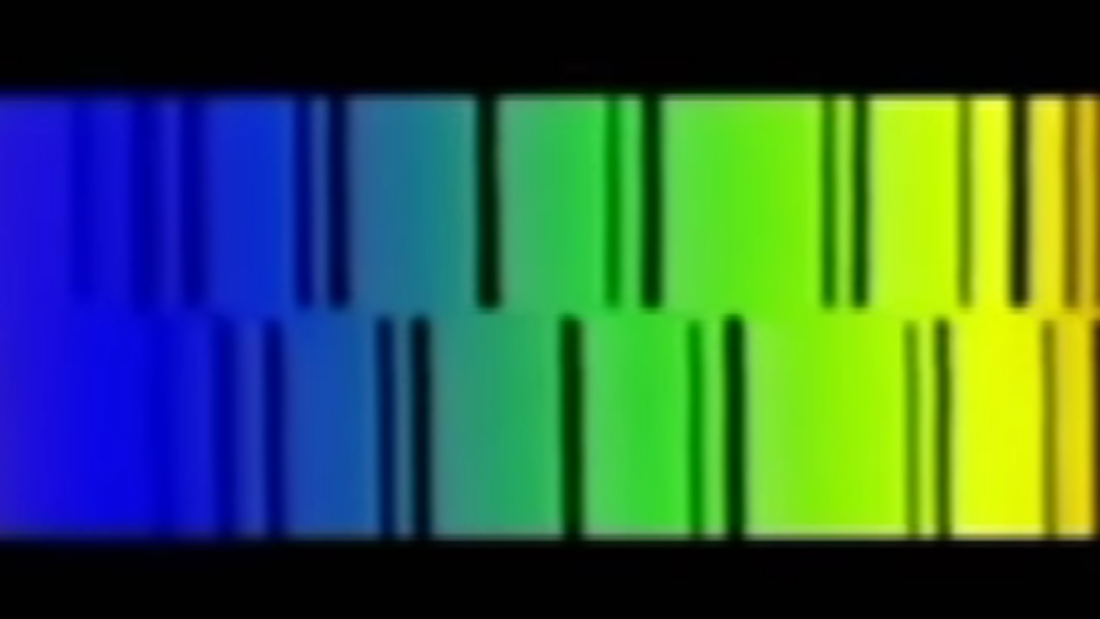COPERNICAN PRINCIPLE DESTROYED – part 1 : https://www.youtube.com/watch?v=u_fOL…
COPERNICAN PRINCIPLE DESTROYED – part 2 : https://www.youtube.com/watch?v=KCl0G…
Someone is wielding a lot of power behind the scenes and this isn’t any conspiracy theory.
Copernicus’s fixed stars at “immense height” solved the annual parallax problem, but at the cost of stars of physical size far in excess of even the Sun.
Tycho Brahe made this cost ever so clear. Tycho was the leading astronomer of his era. While other well-known astronomers like Copernicus or Galileo made their observations and published their results and ideas as individuals, Tycho ran a major observatory (“Uraniborg”) and research program on his island of Hven, whose cost to the Danish crown was proportionately comparable to the budget of NASA (Couper, Henbest, and Clarke 2007, 120; Thoren1990, 188).
With access to the biggest and best available instruments, and with the most skilled assistants, Tycho could achieve incredible accuracy in his work: Modern analysis of his work shows that he could define any star’s position within a circle of diameter less than a minute of arc (1/60 degree; 1/30 the apparent diameter of the Moon); for certain sorts of measurements, such as the altitude of the North Celestial Pole, he could exceed this accuracy by better than an order of magnitude (Maeyama 2002, 118-9).
Owen Gingerich often illustrates Tycho’s incomparable contribution to the astronomy of his time by means the 1666 Historia Coelestis of Albertus Curtius, which as Gingerich notes contains a few tens of pages of pre-Brahean observations, hundreds of pages of Tychonic material, and again a few tens of pages of post-Brahean observations to 1630.
He argues that “only twice in the history of astronomy has there been such an enormous flood of new data that just changed the scenes—the flood from Tycho Brahe and the flood from the today’s digital revolution.” (Gingerich 2009, 10:00 mark and following)
Gingerich has noted that Tycho’s quest for better observational accuracy “places him far more securely in the mainstream of modern astronomy than Copernicus himself [Gingerich 1973, 87]”.
Tycho obtained precise measurements of the apparent diameters of the fixed stars, determining that a typical first-magnitude star has an apparent diameter of two minutes of arc—one fifteenth the diameter of the Moon or Sun.
In a geocentric universe, fixed stars could lie just beyond Saturn (Figure 2) — a distance of just over 12.5 A.U. Thus Tycho determined that the physical diameter of the typical first-magnitude star was about 80% that of the Sun—one of the larger bodies in a celestial assemblage whose smallest member was the Moon and whose largest was the Sun (see Table 1).
But in a Copernican universe, in order for annual parallax to be no more than a minute of arc (just falling under Tycho’s circle of general accuracy, and thus just evading detection),the distance to the fixed stars would have to be almost 7,000 A.U. Copernicus’s Saturn-to-stars “gap of the largest size” would be over 700 times the Sun-to-distance. And the stars themselves, rather than falling within the size range of the other heavenly bodies, would have to be hundreds of times the diameter of the Sun (see Table 2).
What’s more, said Tycho, what if the parallax turns out to be smaller than that minute of arc? Then the fixed stars would have to be still larger. Such immense stars at such immense distances were absurd. (see Blair 1990, 364; Moesgaard 1972, 51 Brahe 1601, 167)
But according to Christoph Rothmann (~1555~1600), the German Copernican against whom Tycho leveled this argument, this was not absurd at all. The Creator need not make Creation conform to our notions of reasonableness (Moesgaard 1972, 52). Said Rothmann —
But as far as I am concerned … why should it seem untrue for the distance from the Sun to Saturn to be contained so many times between Saturn and the remoteness of the fixed Stars? or what is so absurd about a Star of the third Magnitude having size equal to the whole annual orb? What of this is contrary to divine will, or is impossible by divine Nature, or is inadmissible by infinite Nature? These things must be entirely demonstrated by you, if you will wish to infer from here anything of the absurd. These things which common men see as absurd at first glance are not easily charged with absurdity, for in fact divine Sapience and Majesty is far greater than they understand. Grant the Vastness of the Universe and the Sizes of the stars to be as great as you like —these will still bear no proportion to the infinite Creator. It reckons that the greater the King, so much more greater and larger the palace befitting his Majesty. So how great a palace do you reckon is fitting to GOD? [Brahe 1601, 186; Graney 2012]
Rothmann was not the first Copernican to invoke “palace of God” imagery in regards to the enormous stars demanded by the Copernican theory.
Thomas Digges (1546-1595) of England — one of only perhaps fifteen identifiable Copernicans in Tycho’s time, one of even fewer to write publicly on the theory, and the first to write on it in a vernacular language (Danielson 2006, 232; Wernham 1968, 461) — described the stars in supernatural terms (see Figure 3).
Indeed, Copernicus himself had spoken of the stars in such terms: “So vast, without any question, is the divine handiwork of the most excellent Almighty [Copernicus 1543, 133].” However, Tycho was most unreceptive to the use of God to solve the problem of the bigness of stars.
He asks where in nature — where all things are well-ordered in all ways of time, measure, and weight, and there is nothing empty, nothing irrational, nothing disproportionate or inharmonious —do we see the Will of God acting in an irregular or disorderly manner? It is true, Tycho says, that a finite world can bear no proportion to an infinite Creator, but nature does show proportion and symmetry within itself — and as an example he cites the human body illustrated in the work of the artist Albrecht Dürer.
There is nothing proportional or harmonious or rational, says Tycho, in the Copernican theory’s so distant stars that so dwarf the Sun(Brahe 1601, 191-2).Despite Tycho’s exhortations, Copernicans continued to connect the bigness of stars to the power of God. Several decades after the German Copernican Rothmann spoke of gigantic stars using the language of the “palace of God”, and well after the advent of the telescope (Figure 4), the Dutch Copernican Philips Lansbergen (1561–1632) could be found using the same language in his 1629 Considerations on the Diurnal and Annual Rotation of the Earth, as well as on the True Image of the Visible Heaven Wherein the Wonderful Works of God are Displayed.
In this widely read and influential book (the first in Europe whose purpose was popularizing the Copernican theory among a non-mathematical audience), Lansbergen accepts the immense sizes of the stars, as to him these show the divine nature of the heavens. He determines the heavens to be threefold, owing to a reference in 2 Corinthians 12:2 to a “third heaven”. The first heaven, says Lansbergen, is that of the planets. The second is that of the fixed stars. It is immense compared to the planetary heaven; each star is indeed the size of Earth’s orbit (as Tycho had said must be the case if Copernicus was right). The light of those stars illuminates the whole of the second heaven, which is therefore full of immense splendor. The purpose of this immense size and splendor is to indicate God’s infinity to humankind. The heavens, Lansbergen says, echoing the words of Digges and Rothmann before him, are like a fore-court in front of God’s palace. The third heaven, that of God, is to the second heaven of the stars as that second heaven is to the first heaven of the planets (Vermij 2007, 124-5).
Thus when Giovanni Battista Riccioli (1598- 1671) in his 1651 Almagestum Novum reprised Tycho’s argument on the bigness of the fixed stars — now using precise telescopic measurements of their diameters and maximum annual parallax (see Figure 4), but obtaining essentially the same result: that in a geocentric cosmos the sizes of stars were consistent with the Sun, Earth, and planets, while in a heliocentric cosmos they dwarfed the Sun (Graney 2010b) — he also reprised Tycho’s complaint about how Copernicans answered the star bigness problem.
Since nothing is beyond the power of God the Copernican answer was beyond refute in one sense, but, like Tycho, Riccioli rejected that answer to the star bigness problem, stating that “even if this falsehood cannot be refuted, nevertheless it cannot satisfy the more prudent men (Graney 2012).



Leave a Reply